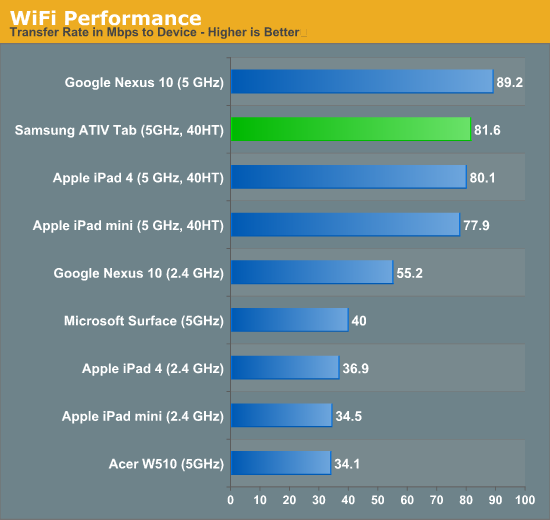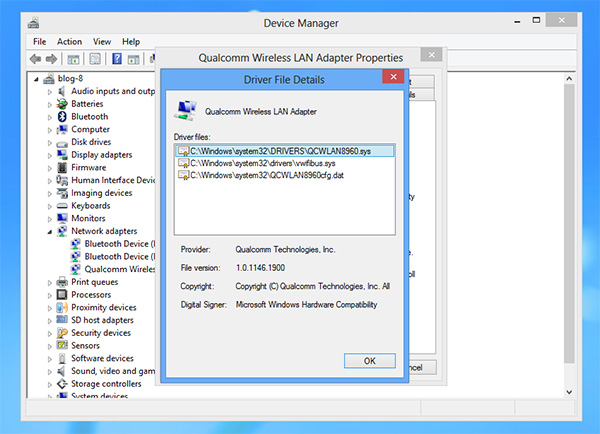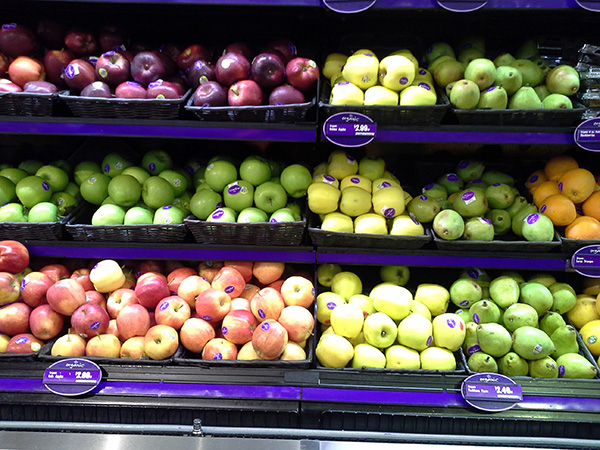Samsung ATIV Tab Review: Qualcomm's First Windows RT Tablet
by Anand Lal Shimpi on January 3, 2013 6:00 AM EST- Posted in
- Tablets
- Samsung
- Qualcomm
- Mobile
- Windows RT
Respectable WiFi Performance
The ATIV Tab uses Qualcomm's own dual-band 802.11n WiFi solution (WCN3660?). The resulting peak performance with 40MHz channels enabled on a 5GHz network is on par with the latest from Apple and in the range of what we got on the Nexus 10 as well.

At 81.6Mbps peak, moving files to the ATIV Tab is measurably quicker than on Surface RT or Acer's W510. This is the first Windows RT/8 tablet I've used with competitive WiFi performance.
Camera
The 5MP rear camera shoots images at 2592 x 1944 while the front facing camera shoots at 1280 x 960. In good light, rear camera performance isn't bad for a tablet:
The rear camera is aided by an LED flash which unfortunately can't be manually controlled. Once ambient light drops below a certain level, the flash always fires. Unfortunately the outcome isn't pretty:

This scene is comfortably lit, but not bright enough to avoid triggering the flash
The rear camera shoots 720p video encoded using AVC main profile (L3.1) at an average bitrate of around 8.6Mbps. Video quality is decent given sufficient lighting but the camera doesn't seem to continually (or at least frequently) adjust exposure, which can result in over/underexposed subjects if your lighting changes dramatically in a scene.
I haven't been particularly impressed by any of the Windows RT/8 camera implementations. Samsung's ATIV Tab isn't horrible but it's not particularly great either.


















42 Comments
View All Comments
Tech-Curious - Thursday, January 3, 2013 - link
Well said.Especially this bit.
MonkeyPaw - Thursday, January 3, 2013 - link
Actually, once you use a nice high-Res device, it is quite difficult to go back to a cheap panel. My vision is by no means great, but the difference between a TF300T and a TF700T is quite noticeable.More to the current weakness of Windows 8--they need to get auto-correct going. So far, the touch keyboard is just that. MS just seems behind on system-wide text entry advancements.
Tech-Curious - Thursday, January 3, 2013 - link
I'm not saying that a higher resolution can't improve your subjective experience on a very small screen -- but at the screen size we're discussing, the difference is nebulous, undefinable.(The high-res panel might also have better color fidelity or a better contrast ratio, for example. Resolution isn't the only determinant of image quality -- and by definition, resolution becomes less determinant as screen size dwindles.)
High resolution is a luxury, and as BrokenCrayons points out, it's a costly luxury. To me, the benefit of a larger resolution is more than offset by the performance penalty. A tablet with a high-res screen will tend to cost more, and it will tend to age faster than a lower-res analogue. After all, your TF700T has to draw 222% more pixels than your TF300T. (2.28 million versus 1.024 million.)
Do you really think the TF700T looks 222% better? If you'd never used the TF700T, would the display on the TF300T bother you at all? The inferior tablet in your example boasts a pixel density 10% higher than the pixel density of the perfectly serviceable desktop monitor on which I'm typing this post, BTW.
As usual, the matter boils down to a value proposition. Of course a higher-resolution screen is better than a lower-resolution screen, all else being equal, but people on any kind of budget should consider how well a given resolution fits into their budget, both now and in the future. I say the same thing about desktop rigs; if you're a gamer, for example, and you get yourself accustomed to ultra-high-res and/or multi-monitor gaming, then you are signing yourself up for a very expensive hobby. You may only have to buy the monitor(s) once, but you're gonna have to keep shelling out for high-end video cards to accommodate it (them).
On the other hand, someone who is accustomed to (and content with) lower-resolution gaming can wring an immense amount of value out of their computer hardware. Likewise, a consumer who's content with less-than-preposterous resolutions on a tablet will wring more value out of his tablets. He'll feel compelled to upgrade less often, which is probably the reason tablet manufacturers are pushing high-res screens so hard lately. ;)
Tech-Curious - Thursday, January 3, 2013 - link
(That should say, "your TF700T has to draw 122% more pixels than the TF300T." The former has 222% as many pixels as the latter, not 222% more pixels. :)Tech-Curious - Thursday, January 3, 2013 - link
All of that said, and whether you think a high-res tablet display is worth it or not, I think we can agree that killerclick's original, disparaging comment ("LOL @ 1366x768") was unwarranted given the size of the screen we're discussing.MonkeyPaw - Friday, January 4, 2013 - link
In my search to replace my Iconia A500, I tried a W510, TF300T, and the TF700T. I am normally a value shopper too, but the older I get, the more my definition of value changes. I used my last tablet every day, almost exclusively at home, and I don't play FPS games on a tablet. It's not IF the screen is some quantitative amount better, it is if the clearly better screen is worth the extra cost. Considering you also get faster internals and better build quality for an additional $70, I'd say it's worth it. I didn't find that much variation in battery life, and the TF700T lasts "all day" and charges in a couple hours. I used 5% of my battery in 40 minutes of web browsing this morning.Tech-Curious - Friday, January 4, 2013 - link
I'm glad you're happy with your purchase. To clarify, it was never my intention to criticize the TF700T as a bad value in total. I'm actually a bit of an ASUS fanboy.As you point out, there's more to the product than just the screen's resolution. My only point is that high resolution is a burden on the rest of the system. Like BrokenCrayons, I question how much practical use the consumer gets out of 1900x1200 on a 10.1" screen.
ninjacut - Thursday, January 3, 2013 - link
Its absolutely worth the price, considering it runs a full OS and not a Phone OS. If you compare the footprint, WP8 has same size has Android or iOS.Now add multi-user, desktop, office, file system, network share, with desktop grade utilities like power shell, explorer, task manager, disk manager, etc. etc. etc then obviously the footprint will be large.
Is that too difficult to realize?
mayankleoboy1 - Thursday, January 3, 2013 - link
Anand, both SunSpider and Kraken are outdated benchmarks. Browsers have optimisations for them, which doesnt translate into real world performance.The best benchmark is the "Google Octane". It consist of all real world tests.
DanNeely - Thursday, January 3, 2013 - link
Any idea when this will be finished? We've seen battery results a few weeks ago alongside the Acer 510 review; and you've added CPU/GPU numbers on it in this review. What's left to do before the writeup?